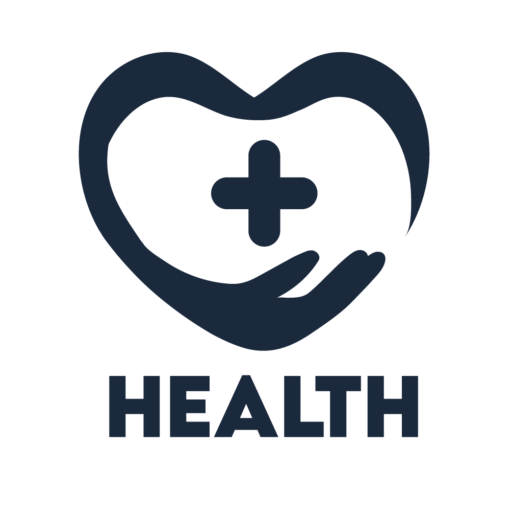Why Prevention Is Better Than Cure The phrase “Prevention is better than cure” has been a cornerstone of health advice for centuries, but its significance has only become more apparent in recent years. In the modern age of healthcare, with advancements in medical technology and treatment options, we often focus on cures for illnesses and diseases. However, when it comes to health, being proactive and focusing on prevention offers far greater benefits, not only for individuals but also for society as a whole. Prevention can save lives, reduce healthcare costs, and promote a higher quality of life.
In this blog, we will explore why prevention is better than cure, examining how preventive healthcare practices can help us avoid disease, improve overall well-being, and contribute to long-term health outcomes.
Understanding the Concept of Prevention
- What Is Prevention?:
- Prevention refers to the actions, behaviors, and strategies designed to reduce the risk of developing health issues. It involves adopting habits that promote well-being and addressing potential problems before they turn into serious conditions. Prevention comes in various forms, including lifestyle changes, screenings, vaccinations, and early interventions.
- There are three main levels of prevention:
- Primary Prevention: Preventing the onset of disease by reducing risk factors (e.g., exercise, healthy eating, vaccinations).
- Secondary Prevention: Detecting diseases early through screenings and tests to minimize their impact (e.g., mammograms, blood pressure checks).
- Tertiary Prevention: Managing long-term illness to prevent further complications and improve quality of life (e.g., rehabilitation, pain management).
- Why Preventive Care Matters:
- Prevention not only aims to avoid diseases but also works to maintain good health, reduce healthcare costs, and improve productivity. Preventive measures empower individuals to take control of their health, which in turn leads to healthier communities and economies.
Prevention Saves Money
- Reducing Healthcare Costs:
- Healthcare spending on treating diseases and managing chronic conditions is a significant burden on individuals and the economy. Preventing diseases can substantially reduce these costs. For example, the cost of treating diabetes-related complications such as kidney failure, amputations, and heart disease can be overwhelming. However, these complications are often preventable through lifestyle changes such as proper diet, regular exercise, and managing blood sugar levels.
- Preventive measures such as vaccinations, health screenings, and public health initiatives can help avoid expensive treatments and hospitalizations. For instance, preventing conditions like hypertension and high cholesterol through regular check-ups can reduce the need for costly medical interventions in the future.
- Financial Impact of Lifestyle Diseases:
- Chronic diseases, such as heart disease, diabetes, and obesity, are often preventable through healthy lifestyle choices. These diseases are not only costly in terms of medical treatments but also affect a person’s ability to work, leading to lost productivity. By preventing these conditions, individuals can avoid both the direct and indirect financial burden that comes with long-term health issues.
Prevention Improves Quality of Life
- Living a Healthier, Longer Life:
- Prevention allows individuals to lead a healthier, more fulfilling life. By avoiding the onset of chronic conditions, people can maintain a higher level of functioning, better mobility, and more energy as they age. For instance, by adopting a balanced diet and regular exercise routine, individuals can lower their risk of heart disease, stroke, and other age-related conditions, enabling them to remain independent and active in their later years.
- Preventive health practices, such as stress management, maintaining a healthy weight, and avoiding smoking, can also improve mental well-being, reducing the risk of anxiety, depression, and cognitive decline. As a result, prevention not only contributes to physical health but also promotes mental and emotional health.
- Avoiding Pain and Discomfort:
- Many diseases and conditions, such as arthritis, back pain, and respiratory issues, can be prevented or alleviated through proactive measures. Early intervention and lifestyle modifications can help individuals avoid the chronic pain and physical limitations that often come with untreated health issues. For example, incorporating strength training and flexibility exercises into your routine can prevent joint pain and muscle stiffness later in life.

Prevention Reduces the Risk of Serious Disease
- Early Detection Saves Lives:
- Early detection of diseases like cancer, diabetes, and hypertension through regular screenings significantly increases the chances of successful treatment. For instance, breast cancer screening (e.g., mammograms) and colon cancer screenings (e.g., colonoscopies) can detect cancer at its earliest, most treatable stages.
- Detecting conditions like high blood pressure or high cholesterol early allows for timely intervention, which can prevent the development of more severe problems like stroke or heart disease. In contrast, if left undiagnosed and untreated, these conditions can lead to life-threatening complications.
- Vaccination and Preventable Diseases:
- Vaccination is one of the most effective ways to prevent serious illnesses. Vaccines protect against contagious diseases like the flu, measles, polio, and hepatitis, reducing the likelihood of widespread outbreaks and long-term complications. For example, the measles, mumps, and rubella (MMR) vaccine has virtually eliminated these diseases in many parts of the world.
- Additionally, vaccines such as the HPV vaccine can prevent certain cancers, including cervical cancer. By investing in prevention through vaccination, we can reduce the incidence of diseases that would otherwise require expensive treatments and extensive healthcare resources.
Prevention Promotes Sustainable Health
- Sustaining Health Across the Lifespan:
- Prevention isn’t just about avoiding disease; it’s about creating a lifestyle that promotes health throughout life. This includes maintaining a balanced diet, staying active, managing stress, and getting enough rest. By integrating these habits into daily life, people can enjoy sustained health benefits as they age.
- Additionally, preventive health strategies help reduce the burden on healthcare systems by keeping populations healthier overall. A healthier population requires fewer resources for treatment, which makes healthcare systems more efficient and allows for better allocation of resources to those in need.
- Encouraging Healthy Habits:
- Preventive measures encourage individuals to adopt healthier behaviors from an early age, setting a foundation for lifelong well-being. Children who are taught the importance of nutrition, exercise, and mental health practices are more likely to carry these habits into adulthood, reducing their risk for many diseases later in life.
- Community health programs, public health campaigns, and education initiatives all work to promote preventive care, ensuring that individuals have access to the information and tools they need to make healthier choices.
Prevention Contributes to Better Mental Health
- Reducing the Stress of Illness:
- Dealing with illness or chronic conditions can cause significant emotional and mental strain. The fear of being diagnosed with a disease or managing a long-term illness can lead to stress, anxiety, and depression. Preventing illness through proactive care reduces this mental burden, allowing individuals to enjoy a sense of security and well-being.
- Preventing Mental Health Issues:
- Prevention is also crucial in mental health care. Practices such as mindfulness, therapy, and regular social engagement can help prevent conditions like depression and anxiety. Early intervention in mental health concerns also helps prevent the escalation of these issues into more severe disorders.
The Role of Prevention in Public Health
- Healthier Communities:
- Prevention not only benefits individuals but also has a profound impact on the health of communities as a whole. Public health initiatives, such as vaccination campaigns, smoking cessation programs, and education on healthy living, contribute to healthier populations. When communities prioritize prevention, it leads to fewer disease outbreaks, lower healthcare costs, and better overall health outcomes for everyone.
- Reducing Health Inequalities:
- Prevention can also help reduce health disparities. By providing equitable access to preventive care, all members of society can benefit, regardless of their socio-economic status. Prevention ensures that everyone, regardless of background, has the opportunity to lead a healthy life.

Conclusion
In the realm of health, the adage “prevention is better than cure” rings truer than ever. Preventive healthcare not only saves money and improves quality of life but also contributes to the overall well-being of individuals and communities. From lifestyle choices to early screenings and vaccinations, taking proactive steps can significantly reduce the risk of developing chronic diseases, lower healthcare costs, and promote long-term health.
Rather than waiting for illness to strike, we should invest in prevention today to ensure a healthier tomorrow. By embracing prevention, we can all lead longer, more fulfilling lives—free from the burden of avoidable diseases and health issues.

